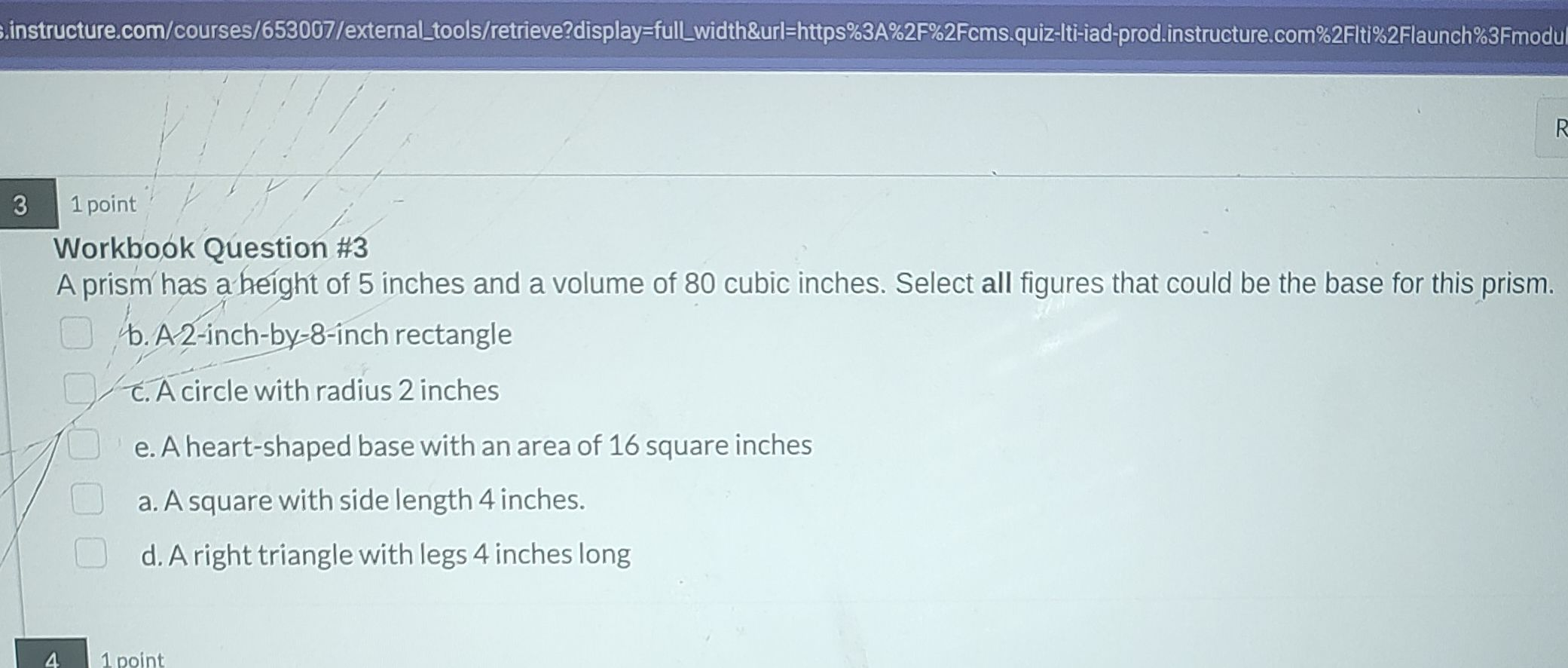AI tutor
Welcome to Bytelearn!
Let’s check out your problem:

A prism has a height of inches and a volume of cubic inches. Select all figures that could be the base for this prism.A. A-inch-by-inch rectangleB. A circle with radius inchesC. A heart-shaped base with an area of square inchesD. A square with side length inches.E. A right triangle with legs inches long
Full solution
Q. A prism has a height of inches and a volume of cubic inches. Select all figures that could be the base for this prism.A. A-inch-by-inch rectangleB. A circle with radius inchesC. A heart-shaped base with an area of square inchesD. A square with side length inches.E. A right triangle with legs inches long
- Volume Formula Application: The volume of a prism is given by the formula , where is the area of the base and is the height of the prism. We are given that the height () is inches and the volume () is cubic inches. We can use this information to find the required area of the base () by rearranging the formula to .
- Base Area Calculation: Using the formula , we substitute the given values to find the area of the base.The area of the base must be for the prism to have a volume of
- Option Evaluation: Square: Now we will check each option to see if the area of the base matches square inches.a. A square with side length inches.The area of a square is given by . For a square with side length inches, the area is square inches.
- Option Evaluation: Rectangle: b. A -inch-by--inch rectangle.The area of a rectangle is given by . For a rectangle with length inches and width inches, the area is square inches.
- Option Evaluation: Circle: c. A circle with radius inches.The area of a circle is given by . For a circle with radius inches, the area is square inches, which is not equal to square inches.
- Option Evaluation: Heart: e. A heart-shaped base with an area of square inches.The area is explicitly given as square inches, which matches the required area for the base of the prism.
- Option Evaluation: Triangle: d. A right triangle with legs inches long.The area of a right triangle is given by . For a right triangle with legs inches long, the area is square inches, which is not equal to square inches.
More problems from Solve quadratic equations: word problems
QuestionGet tutor help
QuestionGet tutor help
QuestionGet tutor help
QuestionGet tutor help
QuestionGet tutor help
QuestionGet tutor help
QuestionGet tutor help
QuestionGet tutor help
